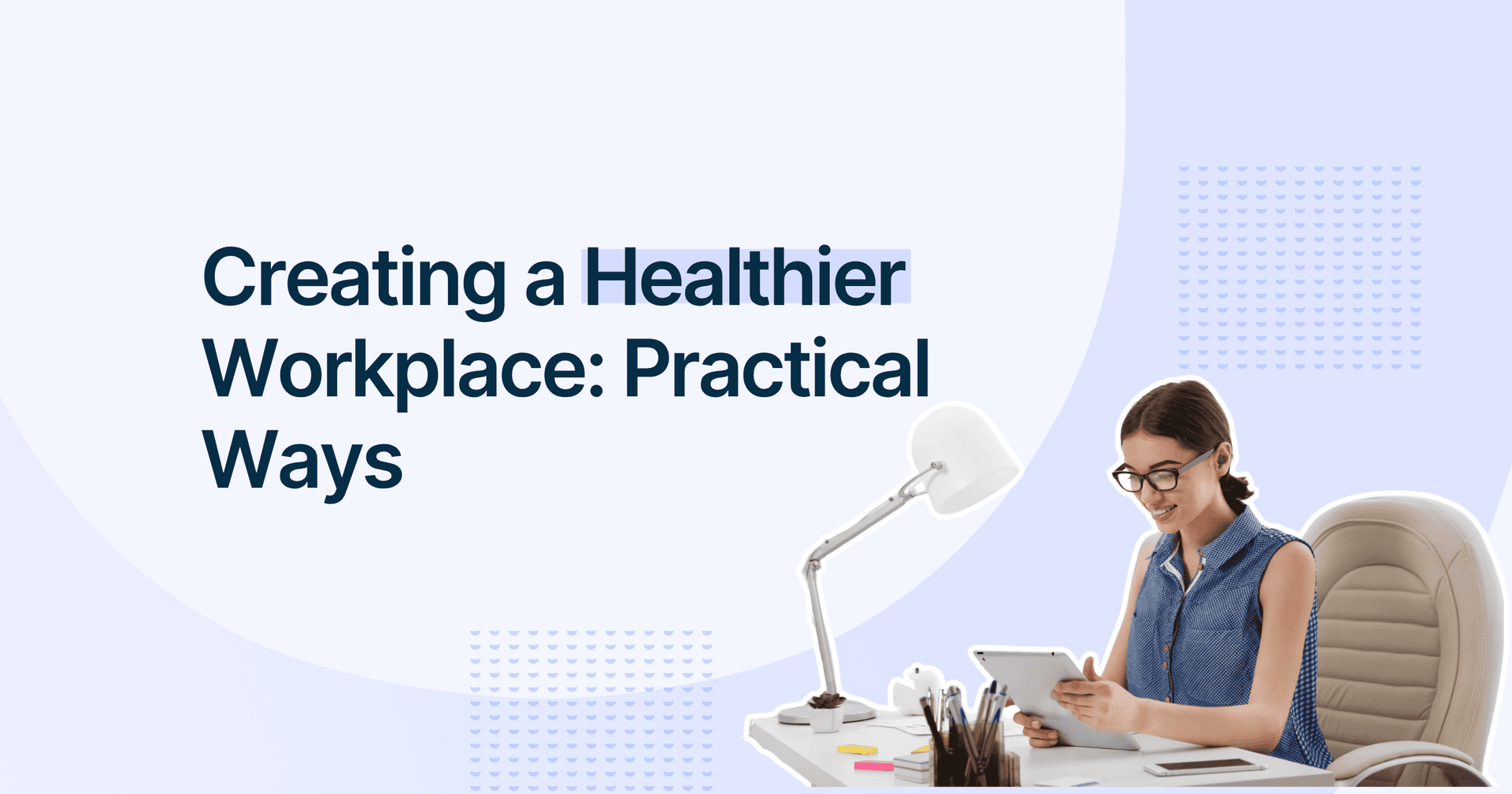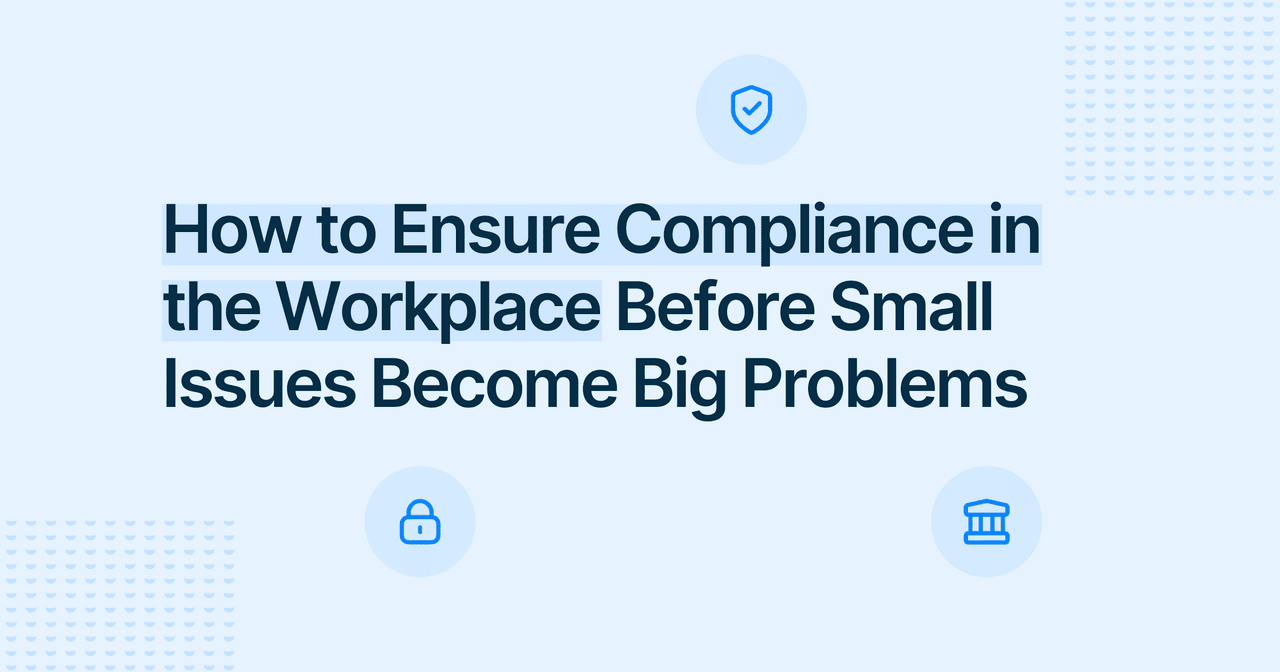



Discover the benefits of a transparent organization!
Try our free platform and strengthen the culture of openness in your team.
Workplace Environment

Yeva Bartkiv
Copywriter
Published
2025-07-28
Reading time
6 min


Table of contents
Subscribe to our newsletter
Modern employees face increasing mental health challenges driven by demanding workloads, blurred boundaries between work and personal life, and the lingering effects of the pandemic. Many are experiencing burnout, disengagement, and reduced job satisfaction - outcomes that impact both people and performance.
Organizations are recognizing the value of supporting employee well-being in the workplace as a strategic priority. It’s not just about perks - it’s about creating a healthy workplace culture where employees thrive.

FaceUp helps companies build trust-driven, transparent environments by offering a confidential reporting and communication platform, making it easier to support employee mental health, address concerns early, and foster a culture of openness and respect.
Before launching any new initiatives, it’s essential to define what employee well-being truly means. It’s not a one-size-fits-all concept.
At its core, employee wellbeing at the workplace encompasses:
In short, well-being means helping people bring their best selves to work - and return home in good health, both physically and mentally.
The importance of employee well-being in the workplace is tied directly to business outcomes. Companies that invest in their people see better retention, higher morale, and increased productivity.
Here’s why employee well-being benefits both individuals and organizations:
FaceUp helps companies improve psychological safety by enabling anonymous reporting - a vital component of a mentally safe work environment.
Many well-intentioned initiatives fail due to poor execution or lack of alignment. Recognizing these pitfalls helps HR leaders and managers build more effective programs.
Some common challenges include:
FaceUp combats these issues by empowering anonymous feedback and early intervention, giving employees a safe space to speak up and seek support.
A successful approach to improving employee wellbeing should be intentional, inclusive, and integrated. It starts with leadership, but must be embedded at every level.
Here are ways to make wellbeing part of your organization's DNA:
The most successful programs are not just HR-led - they are culture-driven.

Mental health is central to overall well-being. Employees today face rising rates of stress, anxiety, and depression. To support your teams, mental health must be visible, accessible, and normalized.
Here’s how to support employee mental health and well-being in meaningful ways:
You can also use global moments like World Suicide Prevention Day to raise awareness and open up critical conversations within your organization.
Employees are tired of surface-level perks. Effective wellness initiatives need to be practical, relevant, and easy to access. When designed well, they reduce burnout and boost energy.

Consider implementing these low-cost, high-impact ideas:
FaceUp can help gather anonymous feedback on which initiatives resonate most - and which ones fall flat - so you can refine your strategy in real time.
Physical health is deeply tied to mental well-being. A substantial body supports focus, energy, and emotional regulation - all crucial for thriving at work.
Ways to promote physical well-being include:
Well-rounded wellness means supporting both mind and body, and FaceUp helps identify health-related barriers employees might otherwise hide.
Employees increasingly prioritize work-life balance and flexible work options. Without them, engagement and well-being suffer.
Support better work arrangements with these steps:
When employees feel trusted and empowered, their job satisfaction and performance naturally rise.
Creating space for honest dialogue is essential for mental wellbeing and lasting culture change. Yet many employees hesitate to speak up, fearing judgment, retaliation, or inaction.
Here’s how to encourage open communication:
Psychological safety is key to effective employee engagement and well-being. Without it, even the best programs fall short.
To sustain support, HR teams must show that their efforts are working. Fortunately, you don’t need a data scientist to measure results.

Track these metrics to evaluate and refine your employee wellbeing strategy:
Measurement helps improve strategy and proves the case for continued investment in employee health and well-being in the workplace.
The future of workplace mental health and well-being is more personalized, tech-enabled, and values-driven. Trends to watch include:
By investing early, your organization positions itself as a leader in building a more human-centered, high-performing workplace.
Improving employee well-being isn’t just about offering support - it’s about building a culture where well-being is woven into the fabric of your organization. That means proactive listening, inclusive policies, supportive leadership, and real accountability.
You don’t have to go it alone. FaceUp empowers your people to speak freely, flag concerns early, and feel heard, giving you the insights needed to build a truly healthy workplace.
Book a demo to see how FaceUp helps improve transparency, trust, and well-being at scale.
Let’s turn well-being from a buzzword into a business advantage - together.




Try our free platform and strengthen the culture of openness in your team.
Keep Reading

Alaa El-Shaarawi2025-12-087 min
Workplace Environment

Alaa El-Shaarawi2025-12-058 min
Legal & Compliance

Alaa El-Shaarawi2025-12-048 min
Legal & Compliance

Alaa El-Shaarawi2025-12-037 min
Legal & Compliance